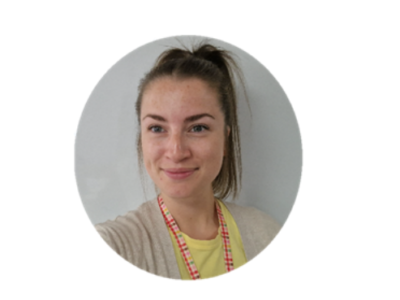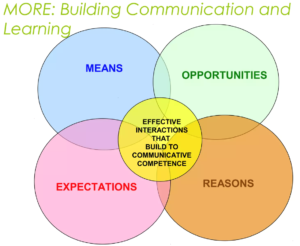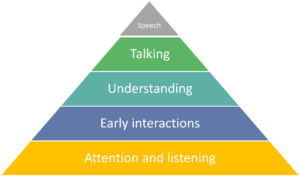Speech and Language Therapy
 West Midlands Speech and Language Therapy
West Midlands Speech and Language Therapy
The Speech and Language Therapy service at The Pines is provided by WMSLT Ltd, an established and independent provider of speech and language therapy services to schools. We have a team of five staff; consisting of one Speech and Language Therapist (SLT) and four Speech and Language Therapy Assistants (SLTAs). See www.wmspeechtherapy.co.uk for more information about the service.
Meet the Speech and Language Therapy Team

Helen Langbourne
Speech and Language Therapist

Mollie Davis
Speech and Language Therapy Assistant

Sian Lowry
Speech and Language Therapy Assistant

Sarah Halford
Speech and Language Therapy Assistant

Mark Mallen
Speech and Language Therapy Assistant
What is the role of the SLT Team at The Pines?
We work with the children alongside their teaching staff and parents to support them in developing their communication skills to the best of their ability. Language is the medium for learning and so supporting children with language learning will enhance access to the curriculum and academic success. Good communication skills help us to build strong social networks with family and friends which supports our wellbeing and positive mental health.
We assess and provide advice and therapy for:
- Understanding language
- Using language
- Producing sounds or have a stammer
- Use of AAC (Alternative and Augmentative Communication)
- Social communication
Why is Speech and Language so Important?
Language is the medium for learing in the classroom and therefore supporting students to learn language gives them greater access to the curriulum and leads to better academic outcomes. Social communication skills are essential for building strong support networks in family and friends which helps us maintain good mental health and wellbeing.
To develop good speech and language and communication skills, children need a 4 things, the model below helps us to understand these basic needs.

- A Means of Communicating (this might be language but may also be a non-verbal communication system)
- An opportunity to communicate
- Reason/Motivation to communicate
- Expectations for students to use their communication skills
At the Pines we work hard to ensure that all child have a functional voice, whether that is by developing language skills or using a non-verbal system of communication, such as a communication book or Picture Exchange Communication System (P.E.C.S.) while language develops. We ensure that school staff have a good understanding of speech, language and communication so that they have realistic and ambitions expectations of students’ communication but are also able to provide a fun and motivating learning environment which is rich and diverse in communication opportunities.
Not all children join us at a stage where they are able to use language to communicate, it is often necessary to target skills that precede spoken language to get them ‘talk ready’.

To be ‘Talk ready’ and reach the green level for talking, an individual needs to have developed all of skills lower down the pyramid. It is often necessary to work for long periods of time on attention and listening, early interactions and understanding of language before our learners acquire spoken language.
How does the Speech and Language Therapy Service Operate at School?
At The Pines we have a very diverse population of students and the majority of the students will need some support from the Speech and Language Therapy Team during their time with us. That is a lot of students needing our help! Research tells us that whilst there is no substitute for working directly with students, it is equally important to ensure that those around them – their teachers and parents also know how to best support their communication skills within their immediate environments. Here is how we define and meet the communication needs of our learners.
The Speech and Language Therapy Team provide support in 3 ways:
Universal Level Support
This includes ensuring that the children at Pines are working within a communication supportive environment. The SLT team train and support the school staff to:
- Identify areas of communication strength and needs.
- Provide visual support systems for students to help them understand language as well as support them to express their needs and ideas, .e.g. Picture Exchange Communication System (P.E.C.S).
- Use communication development strategies within class, e.g. Attention Autism.
- Provide a range and wealth of different communication opportunities across the curriculum.
- Differentiate the curriculum with respect to language needs.
Targeted Level Support
At the Pines we strive to have a trained ‘Communication Champion’ within each class to support the ongoing development of our learner’s communication skills. Communication champions are Level 3 Teaching assistants who have an interest in speech and language and who have completed training with us. See below for further information on Commuication Champions. The role of the Communication Champion is to:
- Support the regular delivery of communication interventions together with the SLT Team.
- Provide a link between SLT and class.
- Measure communication progress demonstrated within the classroom and feedback to the the SLT team.
Specialist Support
Whilst many of our learners at The Pines have similar communication needs, some learners needs may be very unique and may not be addressed with the usual communication interventions offered. These learners may present with speech sound clarity difficulties, have a stammer or have a need to explore use of a voice output communication Aid. For these leaners we offer a specialist service. Staff refer the students to this branch of the service and each student will receive an individual program of communication work (with termly objectives) with delivery assigned to a class staff member, usually a communication champion. Training is provided and progress is measured termly.
Referral and Consent to work with the Speech and Language Therapy Team
1. Consent: Parents are provided with a consent form to sign as part of their welcome pack from the school. This will allow the team to assess and work with your child. We are unable to work with a student if this has not been received. Information on Data collection/storage and sharing is included within this information and further information can be found at www.wmspeechtherapy.co.uk/privacy-notice.
2. Screening: Every student on entry to school will be screened by one of the Speech and Language Therapy Team to get a baseline of their communication skills. This screen will also assign the student to a communication group using the SCERTS Framework. The findings will be presented on their individual Communication Profile and the interventions they will access will be identified.
| SCERTS Partner Stage | Social Partner Stage | Language Partner Stage | Conversational Partner |
|---|---|---|---|
| Communication Level | Maybe non verbal or just beginning to use communication | Using words and phrases, 2 way communication may be difficult | Uses language at a conversational level with some difficulties |
3. Individual Communication Profile: This document will detail the student’s set of communication skills and it will identify specific targets set. These targets are used to identify the interventions your child will access both with the SLT sessions and with classroom staff.
NB: If your child’s needs can not be met within the standard interventions offered in school, they will be placed on the specialist caseload and a specific set of communication work will be detailed and followed.
| SCERTS Partner Stage | Social Partner Stage | Language Partner Stage | Conversational Partner |
|---|---|---|---|
| Interventions | Intensive Interaction Sensory Sentences | Language groups - understanding and using language Sensory Sentences Colourful Semantics | Lego –based Therapy LFBE (language for behaviour and emotions) Word Aware |
Communication Approaches used at The Pines
Attention Autism
Attention Autism. Attention Autism is an intervention model designed by Gina Davies, Specialist Speech and Language Therapist. It aims to develop natural and spontaneous communication through the use of visually based and highly motivating activities.
The Attention Autism programme progresses through a series of 4 stages, building on each skill level below:
- To engage attention
- To improve joint attention
- To develop shared enjoyment in group activities
- To increase attention in adult-led activities
For further information see www.ginadavies.co.uk
Picture Exchange Communication System
The Picture Exchange Communication System, or PECS, allows people with little or no communication abilities to communicate using pictures. People using PECS are taught to approach another person and give them a picture of a desired item in exchange for that item. By doing so, the person is able to initiate communication.
The system moves the student through 6 main phases below:
- Phase 1 – Teaches the user ‘How to communicate’
- Phase 2 – Teaches ‘Distance and persistence’
- Phase 3 – Teaches ‘ Picture Discrimination’ (although some users develop in Phases 1 & 2)
- Phase 4 – Teaches the user to build a ‘Sentence structure’
- Phase 5 – Teaches Responsive Requesting
- Phase 6 – Teaches Commenting
The later stages include using ‘wait’ and ‘no’ with users and teaches attributes and additional vocabulary.
For further information see www.pecs-unitedkingdom.com
Intensive Interaction
Intensive interaction is an approach developed by Dave Hewett for teaching communication skills to children and adults who have autism, severe learning difficulties and profound and multiple learning difficulties who are still at early stages of development. The approach focuses on teaching the fundamentals of communication – the communication concepts and performances that precede speech development, though it may include many people who have some speech and language development.
For more information see https://davehewett.com/about-intensive-interaction
Sensory Sentences (Symbol supported learning using sensory activities)
This is an approach we here at Pines have labelled as ‘Sensory Sentences’ and is simply a symbol supported sentence building approach which uses activities that have a sensory slant to enhance engagement. It usually involves the learner completing a task by requesting to complete actions with objects using symbols by making preferred choices. Learners are also expected to comment on the actions of their peers or if able provide instructions for their peers using simple symbol supported sentences.
Makaton
Makaton is both a signing and symbols system used by children and adults. It uses key word signs and symbols alongside speech to aid communication.
Staff at The Pines will use Makaton with individuals and classes in order to:
- Support the learner’s understanding of the spoken word.
- Support the learner to express their needs and ideas whilst language is developing.
Our Makaton champion at school is Mollie Davis and Mollie produces regular Makaton Videos which she shares via Dojo. These videos are also regularly uploaded to the WMSLT Ltd website – click here to view the latest Makaton Videos. www.wmspeechtherapy.co.uk/resources and select Makaton Videos
For more information see www.makaton.org
Colourful Semantics
Colourful semantics is an approach developed by Alison Bryan to support spoken and written language learning across the curriculum. It aims to help children develop skills in:
- Sentence development
- Understanding questions
- Developing narrative
- Understanding written text
- Developing vocabulary
It uses a series of different colours to represent different elements of a sentence. Vocabulary is presented on the relevant coloured frames or backgrounds and learners build sentences by responding to colour matched question words. Class texts can be made into colourful semantics activities to support understanding of the text and enable student to comment and answer questions about it.
Lego-Based Therapy
LEGO Therapy is a structured play approach to develop language and social skills and was originally developed for children and adults with Autism. A group of children work together to build a LEGO structure, each have defined roles and follow a set of rules to support this play therapy.
Skills developed include:
- Listening
- Sharing
- Getting attention
- Turn-taking
- Sentence building
- Following rules
- Communication repair
- Negotiation
- Problem-solving
Word Aware (An approach to learning vocabulary)
Word Aware is a whole school vocabulary approach to promote vocabulary development in children. This method of developing spoken and written vocabulary in all children is evidence-based following extensive research by Anna Branagan and Stephen Parsons. It is of particular value for children with special education needs and for those learning English as an additional language.
It covers proven strategies of learning vocabulary in fun ways and includes
- STAR approach (Select, teach, activate and review)
- It makes semantic and phonoligical associations
- Teaches word learning strateiges/skills
For further information see www.thinkingtalking.co.uk/word-aware
Language for Behaviour and Emotions (LFBE)
Language for Behaviour and Emotions is an approach developed by Anna Branagan, Melanie Cross and Stephen Parsons which is used predominately in the Secondary School. It has a focus on social interaction skills and helps students develop skills linked to behaviour, such as:
- Understanding meaning and situational context
- Verbal reasoning
- Problem solving
- Emotional Literacy
- Self-awareness
For more information see www.thinkingtalking.co.uk/lfbe
